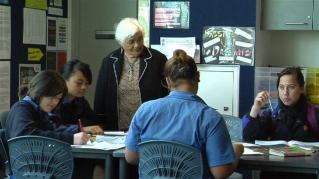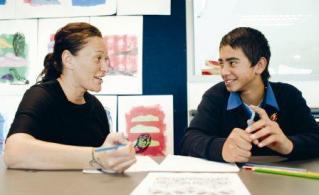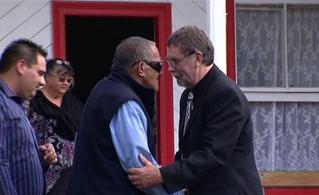Section navigation
27/05/2011
Ngā Reo Awheawhe Reo Māori a-Motu: National Reo Māori Workshops
These clips come from a DVD that was recorded during workshops facilitated by Māori language advisers in schools, to support teachers in the implementation of the Māori language curriculum guidelines, Te Aho Arataki.
In part 1, you will see a model of a welcome to a hui, the skilful use of a proverb, and the incorporation of local knowledge (to provide an appropriate teaching/learning context).
Part 2 explores the concept of the word ‘whakapapa’ – and its derivation – through the creation story of Rangi and Papa. You will also see a timeline from 1840, to show the impact of different events on te reo Māori.
The third part focuses on the inquiry cycle set out on page 20 of the Māori language curriculum guidelines, Te Aho Arataki, with its focus on the learner, their prior learning, and their goals/aspirations.
In the same section, four principles of second language learning are introduced, in the context of communicative language teaching: specifically, the initial exposure to formulaic language, and the opportunities to hear/read/view te reo, as well as to speak/write/present – plus the opportunity to interact with others, using Māori.
One way of teaching vocabulary is also demonstrated in Part 3; that is, the IRDP strategy. In addition, a basic Māori reader is used as a way of learning new words, using picture clues in context. Other second language strategies are demonstrated. Some examples are: controlled practice; same/different; and listen/draw. Teachers also discuss regional variations.
In part 4 the teachers discuss their goals and aspirations for Māori language teaching and learning, by way of an action plan. They are introduced to, and encouraged to explore, the excellent site Te Whakaipurangi Rauemi [LINK] – to find:
- a list of 1000 key Māori words
- self assessment checklists for students
- teacher assessment checklists
- examples of learner goal-setting
- lesson plans
- examples of learner strategies
- a Māori grammar progression
- examples of different types of tasks
- sample tasks in Māori
- four unit plans on myths and legends
- a bibliography of relevant reading.
The final part features frequently asked questions – and a general discussion about the role of the principal, making Māori language learning fun, the value of learning Māori, and the benefit of having Māori curriculum guidelines.
Filed under: Identity Language and Culture | Ako





